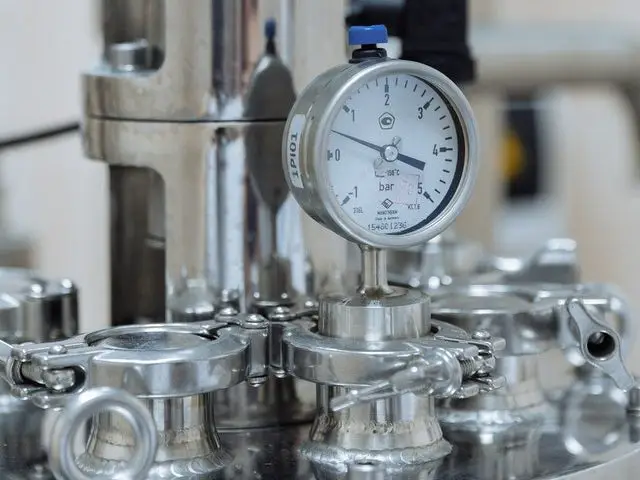In this article we are going to go in depth about 10 ATM water resistance without getting too technical. The purpose here is to shed light on the issue, and hopefully clear up some confusion. We are going to define what 10 ATM is, why it is called that, and what it actually means. So, for starters, we will provide the textbook explanation of what it means if a watch is 10 ATM water resistant.
Put simply, 10 ATM water resistance means that a watch is water resistant to a depth of 100 meters. So that’s it, right? Can you take a 10 ATM watch 100 meters underwater? Well, not exactly!
There is a whole lot more to this issue. And we will get into that. The first thing we need to do though, is discuss what is actually meant by the abbreviation “ATM”.
What does the “ATM”, in 10 ATM Actually Stand For?
Ok, so for starters, what does “ATM” actually mean? Well, ATM, is actually an abbreviation that stands for “atmospheres”. So, what do we mean by that?
The term “atmospheres” is referring to the amount of pressure a watch can actually take. When you start getting into numbers above 1 ATM, you are talking about how much pressure it can take below sea level.
So, the next thing you might be wondering, is how ATM is actually calculated. Like how you get the actual numbers in ATM. In the next part, we are going to go over just that.
How ATM Is Calculated
Going back to the concept of atmospheres, at 1 atmosphere, or 1ATM, we would be describing the pressure of earth’s atmosphere itself. In this scenario, 1ATM is 10 meters of pressure. Now, everything after that, would be referring to the atmospheric pressure below sea level.
Therefore, if 1ATM is 10 meters of atmospheric pressure, then at 2ATM, you are now at 10 meters of pressure below sea level. At 3ATM, you are 20 meters of pressure below sea level. So wait then, why the discrepancy?
In the case of 10ATM, this would be 90 meters of pressure below sea level. So then why do watch companies say that 10ATM means that a watch can withstand the pressure of a depth of 100 meters? I assume that this is to simplify things for consumers.
Yes, when a manufacturer puts 10ATM as 100 meters of resistance, they do indeed intend to say that a watch can withstand the pressure of a depth of 100 meters.
Now the next part is going to answer the question we posited early on in this article. Does this mean you can wear a watch 100 meters underwater? Not quite!
The Truth Behind 10 ATM Water Resistant Watches

The truth is that just because a watch is rated 10 ATM water resistant, doesn’t mean you can wear it 100 meters underwater. And this applies to any ATM number of water resistance. So why is this? And does this mean that the water resistance rating is a lie?
How Water Resistance Is Tested
It all has to do with how a watch is determined to be water resistant in the first place. You see, technically a 10 ATM water resistant watch, can withstand the pressure of a depth of 100 meters. But this would be if it is stationary, and also doesn’t account for the length of time you may have it at that depth.
You see, the way a watch is tested for water resistance is far different from an actual practical application. The way a watch is tested for water resistance is by being sprayed with jets of water. In the case of 10 ATM, it is being sprayed with jets of water that are equivalent to a pressure of 100 meters.
In this way, technically, a 10 ATM water resistant watch could potentially withstand a depth of 100 meters. Trouble is, there is a difference between being sprayed with water jets at that force, and having that pressure being put on it from every possible angle.
This would be the case if it was truly underwater. It would be receiving that force from all angles. Secondly, even in a true underwater scenario, there would be increased pressure from the act of swimming. that movement underwater would account for additional force. Lastly, we wouldn’t know how long it can withstand this type of pressure in a real underwater scenario.
That is how the water resistance rating systems work in watches, and that is why you can’t necessarily assume that a watch rated to a certain water resistance can actually handle being underwater at the rated depth. This leads us to our next point. What can you actually do with a 10 ATM water resistant watch?
Actual Applications of a 10 ATM Water Resistant Watch
To start, here’s a list of some general guidelines for ATM water resistance
- 3-5 ATM: Can withstand splashes of water, rain, and maybe even showering, but shouldn’t be fully submerged in water.
- 10 ATM: Can handle swimming, snorkeling, and maybe even scuba diving.
- 20 ATM: Can handle deep diving.
- 30 ATM and up: Suitable for professional diving, or saturation diving
As you can see here, a 10 ATM water resistant watch is potentially good for aquatic activities such as swimming, snorkeling, and scuba diving. For anything beyond that such as deep diving, you will most likely need a watch with a higher water resistance rating.
The last point to mention here, is that these are just general rules you can follow outside of manufacturer specifications. An interesting thing to note, is that a manufacturer may list their watch as specific ATM number, but the actual manufacturer specifications may not match.
For example, a watch could be rated at 5 ATM, but the manufacturer specifications may say that the watch is good for swimming. Even though the general guidelines suggest that a 5 ATM watch is not good for swimming, you should always go with what the manufacturer claims a watch can do. If the information is false, then the burden of blame lies with the manufacturer, and not with you.
Final Thoughts
Water resistance can sometimes be a tricky subject because of the different types of wording and terminology used. I hope this article has helped to more accurately explain 10 ATM!
If you liked this article, we have more articles with interesting facts about watches. You can check those out here


